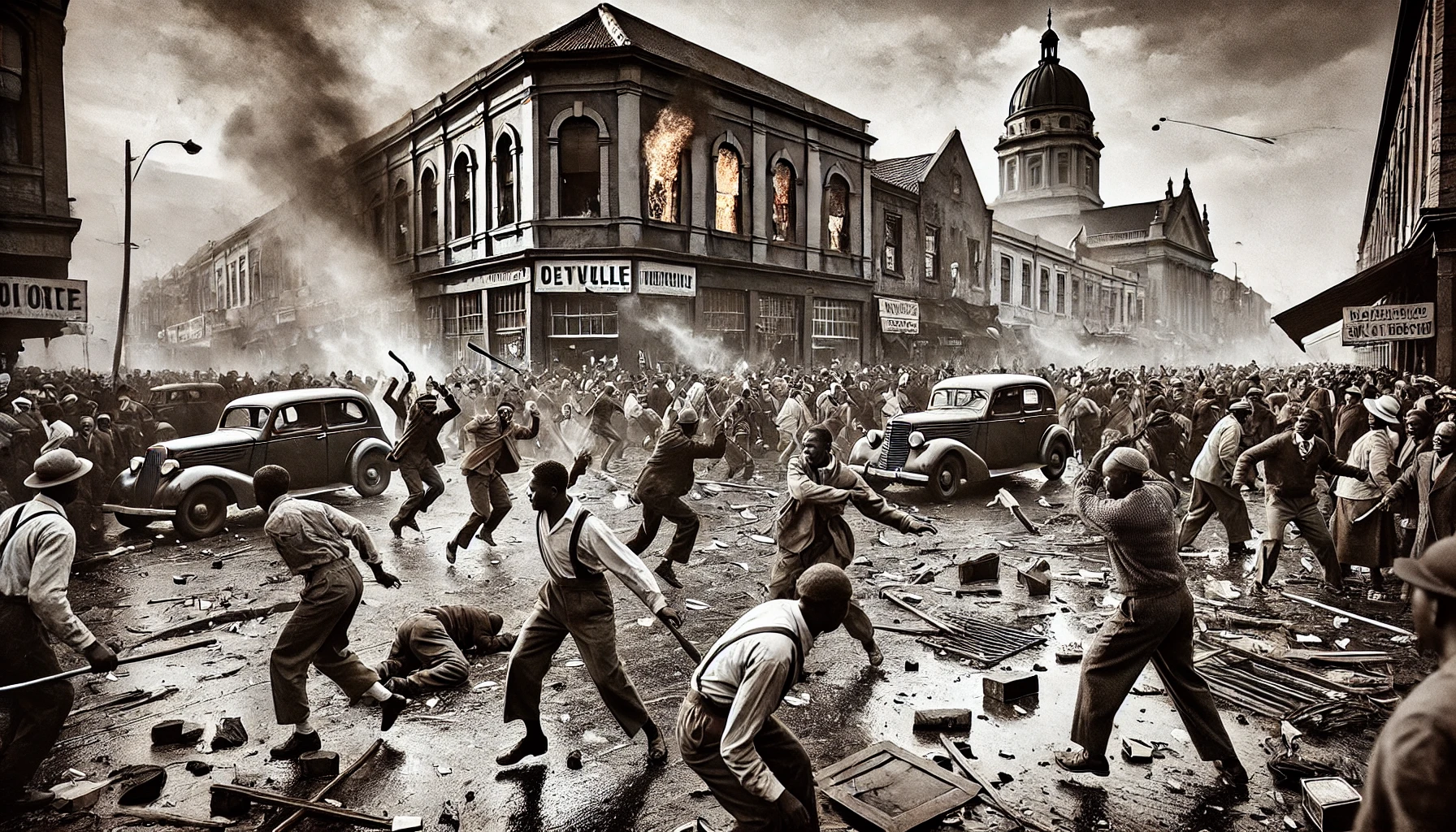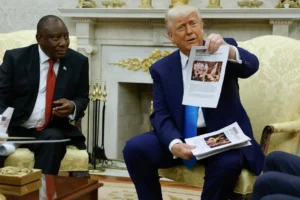
Indentured Indian Labour in South Africa: Historical Context and Contemporary Racial Tensions
Introduction
The introduction of indentured Indian labor to South Africa, particularly in Natal and Durban, marked a significant period in the region’s socio-economic and political history. This article delves into the historical context of Indian indentured labor, the ensuing racial conflicts between Zulus and Indians, and the persistent racial tensions that exist today. Furthermore, it explores potential avenues for resolving these tensions.
Historical Background
Indentured Indian Labour in Natal
In the mid-19th century, the British colonial administration sought to address labor shortages in their colonies. South Africa, particularly Natal, was one such colony where indentured labor was introduced. Between 1860 and 1911, approximately 152,000 Indians were brought to Natal to work on sugar plantations, railways, and in domestic service (Vahed, 2001).
Socio-Economic Impact
The influx of Indian laborers significantly impacted the socio-economic landscape of Natal. Indian laborers were subjected to harsh working conditions, low wages, and restrictive contracts, which often led to exploitation and abuse. Despite these challenges, many Indians completed their contracts and chose to stay, establishing communities and contributing to the local economy (Mesthrie, 2010).
Racial Conflicts Between Zulus and Indians
Early Tensions
The arrival of Indians and their subsequent settlement led to tensions with the indigenous Zulu population. Economic competition and cultural differences exacerbated these tensions. Indians, often seen as economic competitors by the Zulus, were perceived to be favored by colonial authorities, further straining relations (Freund, 1995).
The 1949 Durban Riots
The Durban riots of 1949 were a significant manifestation of these tensions. Sparked by a minor altercation, the riots escalated into widespread violence, resulting in the deaths of 142 people and extensive property damage (Dhupelia-Mesthrie, 2000). The underlying causes of the riots included economic competition, social inequalities, and racial prejudices.
Contemporary Racial Tensions
Persistent Inequalities
Despite the end of apartheid in 1994, racial tensions between Zulus and Indians persist in South Africa. Socio-economic disparities, historical grievances, and political rhetoric continue to fuel these tensions. Indians are often perceived as economically privileged, while many Zulus face poverty and unemployment, leading to resentment and conflict (Desai & Vahed, 2013).
Political and Social Dynamics
Political dynamics also play a role in contemporary racial tensions. Leaders from both communities have, at times, exploited these tensions for political gain. Additionally, social integration remains limited, with Indians and Zulus often living in segregated communities, further perpetuating stereotypes and prejudices (Maharaj, 1999).
Pathways to Resolution
Promoting Economic Equality
Addressing economic disparities is crucial to resolving racial tensions. Policies aimed at economic empowerment and equitable resource distribution can help alleviate the socio-economic grievances that fuel resentment. Initiatives that promote entrepreneurship, education, and employment opportunities for marginalized communities are essential (Sosibo, 2017).
Fostering Social Integration
Promoting social integration through community engagement and cultural exchange programs can help bridge the gap between Zulus and Indians. Encouraging dialogue and understanding can dismantle stereotypes and build mutual respect. Educational institutions, media, and civil society organizations play a vital role in fostering social cohesion (Vahed & Desai, 2010).
Political Will and Leadership
Strong political leadership is essential for addressing racial tensions. Leaders must advocate for inclusive policies and denounce divisive rhetoric. Political parties and leaders should work towards creating a unified national identity that transcends racial and ethnic divisions (Desai, 2002).
Restorative Justice and Reconciliation
Restorative justice initiatives that acknowledge historical injustices and promote reconciliation can also contribute to resolving tensions. Truth and reconciliation processes, similar to those used post-apartheid, can provide a platform for addressing grievances and fostering healing (Krog, 1998).
Conclusion
The history of indentured Indian labor in South Africa and the subsequent racial conflicts with the Zulu population have left a lasting legacy of tension and division. Addressing these tensions requires a multifaceted approach that promotes economic equality, social integration, strong political leadership, and restorative justice. By acknowledging the past and working towards a more inclusive and equitable future, South Africa can hope to overcome these historical divisions.
References
Desai, A., & Vahed, G. (2013). Indentured: Behind the Label of Slavery. University of KwaZulu-Natal Press.
Dhupelia-Mesthrie, U. (2000). From Cane Fields to Freedom: A Chronicle of Indian South African Life. Kwela Books.
Freund, B. (1995). Insiders and Outsiders: The Indian Working Class of Durban, 1910-1990. Heinemann.
Krog, A. (1998). Country of My Skull: Guilt, Sorrow, and the Limits of Forgiveness in the New South Africa. Random House.
Maharaj, B. (1999). Economic Distress, Social Protests and Identity Politics: Exploring the Linkages. Transformation, 40, 41-66.
Mesthrie, R. (2010). The Roots of Language Change: When Theories and Practices Meet. Cambridge University Press.
Sosibo, K. (2017). Economic Empowerment and Racial Tensions in South Africa. African Studies Quarterly, 18(2), 23-41.
Vahed, G. (2001). Indentured Indians in Natal: 1860-1911. Oxford University Press.
Vahed, G., & Desai, A. (2010). Inside Indian Indenture: A South African Story, 1860-1914. HSRC Press.



